What Happened, and Then What Happened
Accounts of the incident on Christmas Eve differ substantially; some of the reported allegations and quotations simply are not credible. I find it impossible to offer a definitive version of events - for instance, some reports say that the Troopers were on horseback, and others say that they were "back on their heels." The following paragraphs try to stitch together pieces of several conflicting versions, plugging holes as necessary, to create a coherent narrative. Doubtless, some of it remains inaccurate.
Early on Monday evening, December 24th, men began to gather in the saloon at Frank Reinhardt's Broadway Hotel, on the southeast corner of Broadway and The Broadway was the preferred meeting venue and tavern for the Fire Department, and for local members of the County Democratic Party. William Duffy's presence would have been a given - not only was he Fire Chief, but he also was trying to advance his position among Town Democrats.
By 7:00 PM, there were about 35 men in the saloon. A Trooper, patrolling Hicksville's streets with a partner, entered the room to ask about a car that was parked outside. William Duffy said it was his, and he was told it needed to have its lights lit. (Apparently, in 1917 lights had to remain lit when a vehicle was parked at night on a public street; this seems to have been among the regulations that local police had not enforced.) Duffy went outside with the Trooper and lighted the vehicle's lights. One report states there was an irritated exchange between the two at this point; when he asked Duffy to identify himself, the Trooper was told to use the license plate number to find out whose car it was. Duffy then went back inside. About 90 minutes later, the Troopers returned, this time to report that the tail light on Duffy's car was out. (One assumes that the tail light - in 1917, likely one that burned kerosene - had been lit during the earlier encounter between the men, as there had been no dispute about it then.) Duffy probably felt harassed. Outside again, he and the Troopers exchanged words. Things escalated when a Trooper attempted to issue him a summons; other men, likely "full of holiday cheer," had come out to watch, and a fight broke out.
One does not need an excess of imagination to understand the confrontation in the context of wartime America. Most of the men involved had German blood, and were celebrating the holiday as they always had, at a German-American hotel. Duffy himself was half-German. They likely felt persecuted - because of a tail light, and on Christmas Eve, for Heaven's sake! They were growing tired of the helplessness with which this new anti-German persecution burdened them.
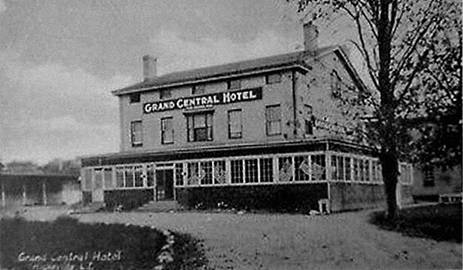
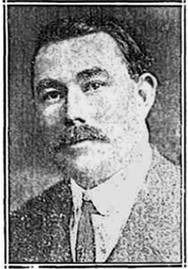
Grand Central Hotel
ebay.com; a better copy of this picture is found in Richard and Anne Evers' book 'Hicksville' in the Images of America series
William J. Duffy
Huntington Long Islander
For their part, the Troopers also felt persecuted, for they were constantly greeted with suspicion. Moreover, the laws that the local police left for them to enforce were primarily ones which annoyed the public they were trying to serve, making confrontations with the public more likely.
As the crowd grew in size and belligerence, the Troopers slowly retreated northward along Broadway, towards their temporary barracks at the Grand Central. Mob-like, the crowd moved with them, its size fluctuating. Reaching the hotel, about 40 men backed the Troopers against a wall. One of them drew a gun, and a few in the crowd shouted about lynching or shooting the besieged Troopers. The latter called up to the hotel's windows, trying to get help from the other Troopers billeted in the rooms. Two Troopers soon emerged and joined in the fray. Fearing that more might do so, the crowd began to disperse. Things finally quieted down at 2:00 AM.
***
Tuesday, Christmas Day, was deceptively quiet. Unknown to the residents of the village, the local Troopers had communicated with their State Headquarters, and their Captain was en route from Albany for the next day's appearance in Hicksville's Court House.
Wednesday morning, State Police swore out warrants before Judge Steinert. There were multiple charges, including inciting a riot, resisting arrest, and assaulting an officer who was discharging his duty. The six men facing charges were Herman Ofenloch, Osborn Curtis, Charles Van Wickler, Adolph Lauck, William Duffy, and Christian Brengel. The last two named were the first two sought, and they resisted arrest. Once subdued, they were handcuffed and taken to Justice Steinert's private office. Over the course of the afternoon, the others were also apprehended. Each was held in $1,000 bail, pending arraignment two days later.
The arraignment on Friday was not at all a quiet business.
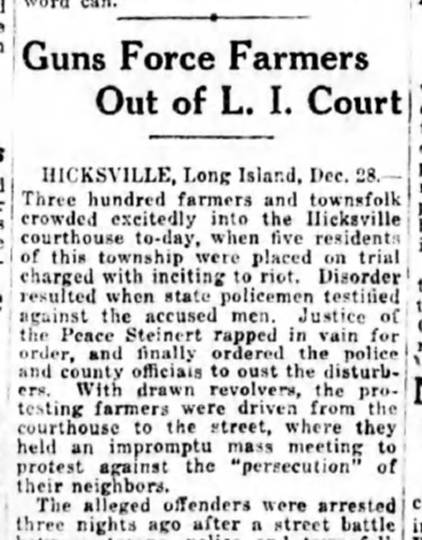
Perhaps shaken by the hubbub, Justice Steinert reserved decision, and he postponed the arraignment for a week, those who had been arrested being "bound over" until then. Comments made at the Court House led to reports that some of the men charged had uttered "disparaging remarks concerning the State of New York, the United States, and the Constitution," and thus might face additional charges of sedition.
On January 4, 1918, the arraignment resumed. According to the Daily Long Island Farmer, the Deputy Sheriffs among those being arraigned had already been stripped of their badges. After hearing all the testimony, Justice Steinert increased the defendants' bail to $2,000. Four "villagers" (presumably not among those already held) who had threatened to lynch the Troopers were scheduled to face a separate hearing. Justice Steinert indicated that Grand Jury indictments were likely, and that the men who had been charged could be imprisoned for up to five years, and fined $500.
In a twist symptomatic of the day's anti-German feelings, the Farmer appended this gratuitous coda to the arraignment story:

Perhaps it felt that the more Germans who were shown to be involved in such activity, the more people could feel vindicated for hating Germans so much.
***
Newspapers reported that on January 19th, the six men who had been charged appeared in County Court in Mineola. The Grand Jury returned indictments against seven men (i.e., testimony had brought to light the actions of one additional man, Daniel Dempsey). The charges seemed less aggressive than those discussed at the time of Judge Steinert's predictions. The men were indicted for unlawful assembly, for rioting, and for refusing to assist in an arrest. Bail was reduced from $2,000 to $500.
Another situation came to light during the Grand Jury's deliberations, one which arose from a factual error in earlier testimony at the Hicksville Court House. One of the Troopers had misidentified the village street on which part of the incident occurred. Afterwards, a newspaper received a letter which falsely alleged that the Trooper who misspoke had privately admitted to perjury. The letter did not identify its author, but for reasons not stated, the newspaper believed it had been written by Hicksville dental surgeon Elwood A. Curtis. He was a brother of one of the men arrested, but he also was a credible, highly respected member of village government. It printed the letter.
The now-public letter was considered libelous. His purported connection to it led to the indictment of Dr. Curtis for criminal libel. His bail was also set at $500.

Brooklyn Daily Eagle
All of those charged entered pleas of not guilty, and their trials - Elwood Curtis was to be tried separately from the others - were scheduled for February. In the interim, they all went free on bail.
***
The trial of the seven accused, finally conducted in mid-March, proved uneventful, and in comparison to the riot and the exciting first attempt at arraignment, it was anticlimactic. After nearly a full week of testimony from "a great many witnesses" (the press neither described their testimony nor identified them), and then four hours of deliberating, the jury rendered a verdict of guilty on a single charge: unlawful assembly. Strangely, the press does not seem to have reported on the disposition of the more salient indictments that had precipitated the trial.
County Judge Lewis J. Smith, notable at the time for his recent work as prosecutor on a high-profile murder case, dealt with the convicted rioters - perhaps one should instead refer to them as "convicted unlawful assemblers" - as follows:
- William Duffy: reprimand; fined $100
- Herman Ofenloch: reprimand; fined $50
- Christian Brendal: reprimand; fined $50
- Charles Van Wickler: reprimand; fined $50
- Osborne Curtis: reprimand; fined $50
- Adolph Lauck, reprimand; fined $25
- Daniel Dempsey: reprimand; sentence suspended
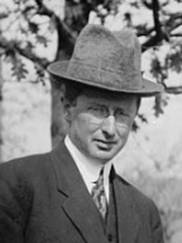
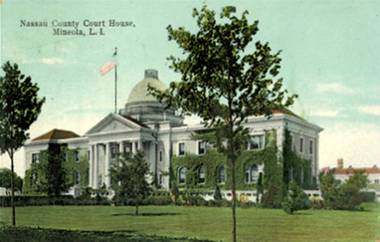
Judge Lewis J. Smith
www.flickr.com/photos/library_of_congress/6266475156/
Nassau County Court House
/www.nycourts.gov/history/legal-history-new-york/courthouses-counties/nassau.html
***
What became of the charge against Dr. Curtis? I have found no reference in any newspaper to his trial for libel, other than its having been scheduled to commence on March 8, 1918 in Mineola. This "exclusive" from the Eagle may provide a clue.

To recap, the Huntington Long Islander had reported on "So-called Rioters," and in return, it had received the libelous letter from "So-called Voters." Apparently, the editors were led to believe that Dr. Curtis was its author, and printed the letter, thereby setting off a sequence of events which brought about the charge of criminal libel.
Obviously, the prosecutor would have needed evidence to counter Elwood Curtis' public denial of responsibility. As can be seen above, the Sergeant's admirable expression of confidence in his Troopers does not imply that there was any such evidence. He must have been well versed in the facts of the case, and yet he did not even hint that any proof of the author's identity had come to light.
If there really was no evidence, then the scheduled trial of Dr. Curtis could not have moved forward. I suspect that it was not held at all. Like the earlier allegations of sedition, and the indictments for rioting and for assaulting a law officer, his indictment for criminal libel seems to have simply evaporated during the two months that followed that tumultuous Christmas Eve.
***

